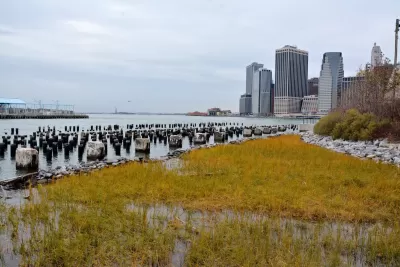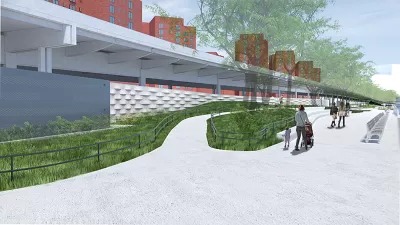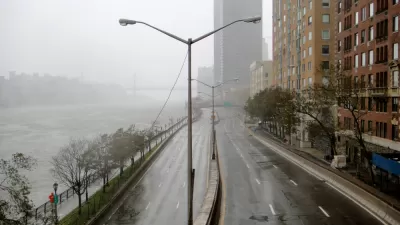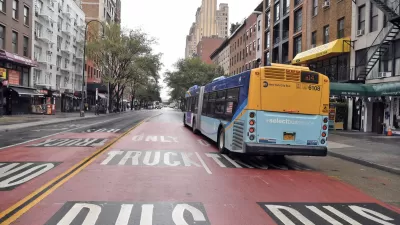After delays and a groundbreaking that still has not happened, proposed changes to New York’s big resiliency project have not been well received.

Danielle Muoio reports on the current status of the East Side Coastal Resiliency project, part of a larger plan called the Big U and funded by Rebuild by Design, a competition sponsored by the Department of Housing and Urban Development:
The intention was to add 2.2 miles of coastline that could absorb flooding in the event of a storm surge, but act as a park with jogging trails and other recreational activities on a day-to-day basis. It was expected to cost $760 million in total funding, with the city providing the additional $425 million.
The funds were awarded in 2014, and the project was scheduled to start in 2017. However, the de Blasio administration recently released a new plan that would cost significantly more, $1.45 billion, and change the design.
The new park would be raised, with a flood wall, and instead of extending to East 25th Street, it would end at East 13th Street. The administration says that under the revised plan’s schedule, the park would be finished 18 months sooner and construction could be shifted away from FDR Drive.
However, the plan raised questions about whether the new design would block East River views and about why the design is changing so late in the process. In addition, construction would not start until 2020, and concern has emerged about the future of other Big U projects.
FULL STORY: De Blasio administration pitches significant changes to East Side resiliency project

Study: Maui’s Plan to Convert Vacation Rentals to Long-Term Housing Could Cause Nearly $1 Billion Economic Loss
The plan would reduce visitor accommodation by 25,% resulting in 1,900 jobs lost.

North Texas Transit Leaders Tout Benefits of TOD for Growing Region
At a summit focused on transit-oriented development, policymakers discussed how North Texas’ expanded light rail system can serve as a tool for economic growth.

Why Should We Subsidize Public Transportation?
Many public transit agencies face financial stress due to rising costs, declining fare revenue, and declining subsidies. Transit advocates must provide a strong business case for increasing public transit funding.

How Community Science Connects People, Parks, and Biodiversity
Community science engages people of all backgrounds in documenting local biodiversity, strengthening connections to nature, and contributing to global efforts like the City Nature Challenge to build a more inclusive and resilient future.

Alabama: Trump Terminates Settlements for Black Communities Harmed By Raw Sewage
Trump deemed the landmark civil rights agreement “illegal DEI and environmental justice policy.”

Dear Tesla Driver: “It’s not You, It’s Him.”
Amidst a booming bumper sticker industry, one writer offers solace to those asking, “Does this car make me look fascist?”
Urban Design for Planners 1: Software Tools
This six-course series explores essential urban design concepts using open source software and equips planners with the tools they need to participate fully in the urban design process.
Planning for Universal Design
Learn the tools for implementing Universal Design in planning regulations.
City of Santa Clarita
Ascent Environmental
Institute for Housing and Urban Development Studies (IHS)
City of Grandview
Harvard GSD Executive Education
Toledo-Lucas County Plan Commissions
Salt Lake City
NYU Wagner Graduate School of Public Service





























